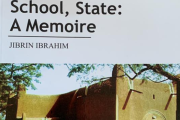As the world awaits a President Donald Trump announcement later today, the substance of which is the reported elimination of Abu Bakr al-Baghdadi, the leader of the Islamic State proclaimed in 2014, the question of who actually the man was is bound to come up. Abu Bakr al-Baghdadi has successfully evaded targeting since then, including embarrassing a Russian claim that he had been blown up in 2017 but not this time it seems.
The medical verification process of the American targeted killing system must have delayed the announcement but which American military sources and Trump have virtually made, through twitter in the case of Trump when he said last night that something big had happened.
 Graeme Wood of The Atlantic who has covered ISIS and conducted an interpretation of Baghdadi’s video appearance earlier in April 2019 contrasts him to Osama Bin Laden who was also killed in an American operation. According to Wood, unlike Bin Laden who came from a wealthy family that makes it difficult for him to manage his image, Baghdadi managed his image carefully. Wood wrote inter alias “His sole previous appearance cast him in terms familiar from early Islamic history. He quoted the Prophet’s successor and father-in-law, Abu Bakr, likening himself to him; he wore the colors of the Abbasids. He delivered a speech filigreed with religious terminology and highfalutin religious diction and grammar. That self-presentation was almost comically over-managed. This one probably is, too”
Graeme Wood of The Atlantic who has covered ISIS and conducted an interpretation of Baghdadi’s video appearance earlier in April 2019 contrasts him to Osama Bin Laden who was also killed in an American operation. According to Wood, unlike Bin Laden who came from a wealthy family that makes it difficult for him to manage his image, Baghdadi managed his image carefully. Wood wrote inter alias “His sole previous appearance cast him in terms familiar from early Islamic history. He quoted the Prophet’s successor and father-in-law, Abu Bakr, likening himself to him; he wore the colors of the Abbasids. He delivered a speech filigreed with religious terminology and highfalutin religious diction and grammar. That self-presentation was almost comically over-managed. This one probably is, too”
For Wood, Baghdadi was attempting to project the image of a terrorist leader, an insurgent, a shadow-leader of a subterranean movement of global reach. The reporter’s reason for that is in Baghdadi wearing a pocketed vest which Wood says is the kind a mullah is rarely seen wearing but which insurgents and fly fishermen wear all the time. He interpreted the rifle by his side as stressing this point.
As at April this year, Wood could say that the rhetoric no longer take on the pious diction of Baghdadi’s previous speech, a sharp contrast to when, in Wood’s words, Baghdadi ruled a state—complete with a well-armed military, tax collectors, and health inspectors and when he and his top deputy spoke with grandiosity that inspired followers and irritated enemies. “Now, as an insurgent leader again, he has dispensed with the fanciness. He governed in poetry; he terrorizes in prose”, wrote Wood.
Wood made an interesting claim in that analysis. It is that the fall of Baghuz had ruined Baghdadi because he faced a real danger of revolt once he became an absentee caliph. Contrasting him to Mullah Omar, the supreme leader of the Taliban who still had followers even many years after his death, Wood said the expectation that Baghdadi would lead his followers from one victory to another was being shattered. Although the video in April was seen as confirming that Baghdadi was still alive and in charge, it was no longer clear if his followers would stick to “an aging warlord holding court in front of a bedsheet”
 The American special operation must have resolved the problem for his followers about whether how long to remain with him or not. If he is confirmed killed, he becomes a permanently absent caliph.
The American special operation must have resolved the problem for his followers about whether how long to remain with him or not. If he is confirmed killed, he becomes a permanently absent caliph.
That he killed himself is indicative of how hateful he is of the key power in the international order as to be prepared to deny it of the power to shoot him or even capturing him. The psychology of the terrorist must be a tough one.
Baghdadi gives a lie to the idea of terrorists as people who lacked education or were lonely or poor. With a PhD, he was none of these. Most ringleaders of transnational jihadism are not either.
There was a time Hamid Dabashi, the Professor of Iranian Studies at Columbia University in New York claimed in an article he published on Aljazeera website that ISIS’s horrendous killings was a virtual performance. He never repeated the claim. It remains to be seen what happens next to the confusion around the Syrian war on what America wants, what Turkey is doing and what Russia is up to




























